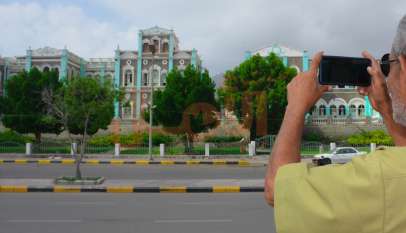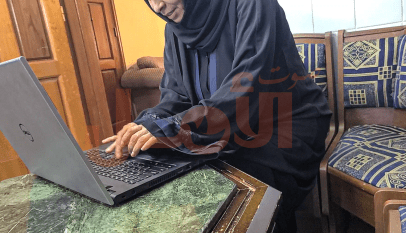Social Media Platforms and Their Utilization: Comprehensive Analysis and Orientation Management
Sawt Al-Amal (Voice of Hope) – Hebah Mohammed
In a digitally interconnected world, we cannot disregard the role that social media plays in our daily lives. It is a powerful and effective communication tool that allows us to connect and interact with the world around us in ways previously unimaginable. However, social media also raises numerous questions and concerns about its positive and negative impact on our lives and communities.
This report aims to shed light on the contradictory aspects of social media, analyzing its influence on individuals and society. We will comprehensively discuss the benefits and advantages it offers, as well as the negative consequences and challenges that may arise from its irresponsible use.
Benefits and Risks of Social Media
In the era of modern technology, social media has become an integral part of our daily lives. These platforms provide digital spaces that enable us to easily and swiftly communicate and interact with the world around us in ways unprecedented before. However, we must be aware of the significant advantages that social media offers while also cautioning against some of the negative effects that can result from its misuse.
Ahlam Nasser, an academic researcher with a focus on social and youth issues, states, “All social media platforms represent fast and efficient working environments, but each platform has its specific tools that require selecting the appropriate tool or optimal approach for each platform. This ensures high productivity, facilitates direct communication, builds broad and extensive relationships, provides an opportunity to speak on social media sites, and stimulates genuine interest in public issues by supplying accurate information.”
Ahlam highlights some of the negative aspects and warnings regarding social media, including “fraud and identity theft, wasting time for many individuals without any benefit, breaching others’ privacy, engaging in unethical behaviors that violate customs and traditions. Excessive use of social media can lead to addiction and dependence, which can negatively impact mental health and social relationships.”
She further explains, “Our excessive focus on social media may lead to isolation from the real world and personal interaction with others. Additionally, many individuals face cyberbullying or negative criticism through social media, which affects their mental well-being, increases anxiety and depression levels. Social media can also contribute to the spread of fake news and misinformation, undermining public discourse and trust in information.”
Regarding the most important advantages offered by social media platforms, Ahlam says, “Expanding social relationships and breaking down barriers that hinder communication and interaction. It is also a means to shape effective public opinion, as well as a tool for marketing, work, and staying updated. Social media helps raise awareness about important social issues and promotes social change. It enables individuals to participate in public discussions and positive initiatives.”
She further emphasizes, “Social media is a platform for learning and raising awareness about a variety of topics. It allows easy and fast access to information and educational resources and contributes to finding job opportunities and building professional networks. Individuals can communicate and interact with decision-makers and professionals in different fields.”
Salman Al-Qubatili, a social media activist, also shares his thoughts, saying, “Indeed, social media platforms have numerous advantages and positive aspects, such as facilitating social communication and interaction, providing a means to share ideas and information, raising awareness about different issues, and enabling individuals to build social networks and expand their social connections.”
He continues, “However, we must also acknowledge that social media platforms have some negatives and challenges. These negatives may include digital violence, where some individuals exploit social media platforms to harass others, spread false rumors, make negative comments, and issue threats, leading to negative psychological and emotional effects on the victims.”
Al-Qubatili further discusses some of the negatives of social media, including, “Privacy violations, as individuals may be exposed to privacy breaches through social media platforms. Personal information can easily spread and become accessible to the public, increasing the risks of identity theft and fraudulent exploitation.”
Dr. Nada Khushafa, Professor of Electronic Administration at Ibb University, says, “Social media platforms are a mixture of positives and negatives, and to overcome the negatives, we advise setting time limits for using social media and sticking to them. Control the notifications on your devices, so you only receive specific and useful notifications. Disable unnecessary notifications as well. Also, maintain your privacy by adjusting its settings and choose who can access your personal information and private posts.”
Effects of Electronic Blackmail on Individuals & Society
“Electronic blackmail is the process of exploiting the other party by identifying their weaknesses, threatening and intimidating them with the disclosure of their secrets or important personal information, and trapping them in a state of moral (psychological) or physical distress,” according to Dr. Ahlam Nasser.
Meanwhile, Nada Khushafa defines electronic blackmail as “the use of digital technology and electronic communication methods to threaten individuals or institutions with the aim of obtaining financial gains or other personal benefits. Electronic blackmail encompasses various forms, such as spreading negative information, threatening the victim with harm, and demanding a ransom.”
Al-Qubatili states, “Electronic blackmail is a serious problem that spreads in communities lacking sufficient digital awareness. Blackmailers may exploit cultural and social norms, as well as vulnerabilities in the security of social media platforms, to achieve their malicious goals.”
Regarding the major effects of electronic blackmail, Ahlam says, “Electronic blackmail can cause psychological stress, anxiety, and depression among victims who feel helpless and fearful of the consequences of sensitive information being exposed or threats being carried out. It can also disrupt the security, safety, and stability of society, contribute to the prevalence and spread of crimes, lead to the breakdown of social relationships and family disintegration.”
Khushafa also points out that electronic blackmail exposes individuals and institutions to significant financial losses due to paying the demanded ransom or the negative impact on their reputation. Additionally, electronic blackmail can undermine people’s trust in using the Internet and electronic communication, as they feel insecure and afraid of interacting with strangers online.
Regarding the measures that can prevent electronic blackmail and protect users, Dr. Ahlam Nasser says, “The measures should involve collaboration between the affected parties and security authorities. If both parties cooperate, it becomes possible to report the crime, investigate it, apprehend the blackmailer, and raise community awareness about blackmail, its effects, damages, and protective measures.”
Al-Qubatili emphasizes the need for real intervention by regulatory authorities represented by the Ministry of Interior through cyber security measures. He calls for the enforcement of strict laws to combat electronic blackmail and the punishment of its perpetrators. These laws should include clear criteria for defining electronic blackmail and impose severe penalties on offenders.
Khushafa adds, “Users should be educated about the types of electronic blackmail and how to deal with them, so they are aware of potential threats and learn to recognize signs of blackmail and how to act when receiving suspicious messages or unusual requests.”
She also advises implementing strong security measures on computer systems and smart devices, such as installing antivirus software, protecting against malware, regularly updating them, using strong passwords, and enabling two-factor authentication when available.
Khushafa warns against accepting friend requests or engaging in conversations with strangers when using social media platforms and urges careful configuration of privacy settings and restricting access to personal information.
Cyberbullying
Khushafa says, “Cyberbullying, also known as electronic harassment, is a form of bullying or persecution that occurs through social media and digital technologies. It is executed by using the Internet and social media platforms to engage in acts of bullying and intimidating others.”
She continues, “The impact of cyberbullying through social media can be devastating for individuals and communities. It can lead to negative psychological effects such as anxiety, depression, and low self-esteem. It can also result in social isolation, deterioration of relationships, and have a negative impact on the academic and professional performance of the targeted individuals.”
Regarding the forms of cyberbullying, she explains, “Forms of cyberbullying through social media include insults and defamation, which involve the use of hurtful and demeaning language, hurling insults and abuses at individuals through comments, emails, or posts, spreading false information, rumors, or misleading information about someone with the intention of tarnishing their reputation.”
Digital Maturity
Regarding how to raise awareness among users about digital maturity, Dr. Ahlam Nasser says, “Maturity is a stage reached by individuals after enduring challenging tests in life. It comes with a sense of complete responsibility and an awareness of ethical values everywhere, accompanied by fear and reverence for forbidden actions. At that point, a person can interact with their phone and websites in a way that reflects their own identity, their family, and their environment. They decide to have a conscious and mature message through which they confidently and securely engage with the world around them.”
Salman Al-Qubatili, the writer, adds, “Comprehensive educational programs should be provided about the risks associated with digital maturity, how to handle and combat them. Awareness campaigns can be organized in schools, universities, and communities to introduce individuals to the concept of digital maturity and its importance.”
He emphasizes the necessity of providing training and education on safe technology usage skills, such as protecting personal privacy, verifying information credibility, and managing time spent online. He suggests organizing online workshops and lessons to teach these skills.
He also advises promoting awareness of Internet safety by providing educational resources and guidelines on how to protect against electronic violations and online fraud, enhancing the concept of digital security, and educating users about best practices to counter electronic threats.
Khushafa emphasizes the importance of strengthening the role of families and home education in promoting digital maturity. Parents should serve as role models and provide guidance to children and youth on how to use technology safely and responsibly. Resources and information can be provided to parents on how to protect their children and teach them safe online behaviors.
Khushafa hopes that these efforts will be implemented at the level of Yemeni society, with the participation of schools, government institutions, and non-governmental organizations, to ensure an effective impact in promoting awareness and responsible online behavior.
Digital Safety
Ahlam Nasser says, “Digital safety is the protection of devices, phones, and other Internet-connected devices from hacking or espionage, as well as safeguarding private information from dissemination, use, or sale.”
Dr. Khushafa, an Electronic Administration Expert, defines digital safety (or cybersecurity) by saying, “It is a set of practices and measures aimed at protecting digital systems and data from electronic threats and risks. The concept of digital safety includes preserving data integrity, maintaining privacy, and ensuring security guarantees for digital systems.”
Regarding the steps to ensure digital safety and protect our personal information, Khushafa advises, “When using social media, there are several steps that can be taken to ensure digital safety and protect personal information. These include strengthening password strength by using strong and unique passwords for each account on social media platforms. Be cautious about personal information and avoid sharing sensitive personal information such as ID numbers, bank account numbers, or home address details.”
She also recommends verifying privacy settings in your social media accounts, specifying who can see your posts and personal information, and limiting access to your account. Additionally, it is important to regularly update the software and applications used for social media. They should be updated frequently to fix security vulnerabilities and enhance safety.
Suggested Strategies for Improving Positive Social Media Interactions
To enhance the positive aspects of social media communication, Dr. Khushafa provides some recommendations. She says, “Interact with others politely and respectfully on social media, avoid using offensive or aggressive language, and remember that your words can impact others. Try to share content that inspires and contributes to the positivity of the digital environment. Share good news, inspiring images, and funny videos that can enhance positive feelings among users.”
She continues, “Respect the privacy of others on social media and do not share personal information about others without their permission. Avoid sharing pictures or content that violates others’ privacy. Exercise caution when sharing personal information before posting any personal information on social media. Ensure to evaluate security and privacy, as some information may be sensitive and require protection.”
She concludes by saying, “Finally, we recommend checking the privacy settings in your social media accounts and ensuring that your profile reflects a positive and well-mannered image of yourself. Respond to others’ questions and provide advice if you can. Additionally, you can participate in discussions and offer constructive and helpful opinions.”
98.1% Believe that Social Media Plays a Major Role in Empowering Yemeni Youth
Sawt Al-Amal (Voice of Hope) – Yomna Ahmed Social media now occupies a large part of our d…












